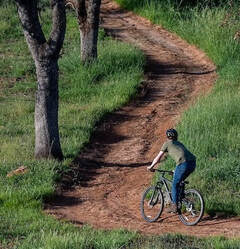 August 27, 2021 Oroville Dam Citizens Advisory Commission Public Meeting The California Natural Resources Agency held its eighth Oroville Dam Citizens Advisory Commission meeting on August 27, 2021. The online public meeting included an overview of major projects and maintenance plans at the Oroville Dam facilities and a presentation by a State Water Contractor. Members of the public also offered comments and asked questions. The Citizens Advisory Commission is a forum to provide public feedback from the communities surrounding Oroville Dam. The meeting transcript and presentations will be available on the Commission’s website in the coming weeks, visit https://bit.ly/OrovilleCAC. Oroville Wildlife Area Habitat Project The season is ending for the sunflowers and safflowers planted this spring on 60 acres of the Oroville Wildlife Area (OWA) near the Thermalito Afterbay to provide food (forage), shelter, and nesting cover for migrating and native birds. Their stalks and flowers are withered and dry, but their nutritious seeds are plentiful, providing welcome energy to birds migrating the Pacific Flyway and those calling the Sacramento Valley their home. This is the time of year when staff from the California Department of Fish and Wildlife (CDFW) mow down the dried flowers, leaving behind acres of seeds and the natural mulch of stems and leaves to nourish and strengthen the soil for next year’s crops. CDFW staff manage the 11,000-acre OWA for the Department of Water Resources (DWR) and farm over 300 acres of grains, grasses, and flowering plants yearly to augment the area’s food supply and add diversity to the area’s wildlife habitat. Learn more about this habitat project on the DWR Updates webpage. Photo: CDFW staff mow fields of sunflowers near the Thermalito Afterbay  Boating at Oroville Launching of trailered boats at Lake Oroville’s temporary single-lane boat ramp at the Spillway Boat Ramp area remains closed due to unsafe conditions. Hand launching of small boats such as canoes or kayaks is permitted. As lake levels drop, the condition of the ramp continues to be reassessed for future use. The Bidwell Canyon Marina remains open and is providing shuttle service to boat owners from 8 a.m. until sundown. Trees, stumps, and landforms are surfacing due to low lake elevations, creating navigational hazards. Boating access on Lake Oroville is not permitted starting one-half hour after sunset and ending one-half hour before sunrise. Houseboats and vessels remaining on the water must be on their mooring ball or in a slip during hours of lake closure. Additional information can be obtained by calling State Parks at (530) 538-2200. Boaters are reminded that low lake levels bring new boating hazards, including tree stumps and snags, and newly emerging outcrops. Power boats are allowed on the Thermalito South Forebay as well as the Thermalito Afterbay. A 5-miles per hour speed limit for all boats is enforced on the Afterbay north of the Highway 162 bridge and near the brood ponds on the east side of the reservoir. No motorized boating is allowed in the Thermalito North Forebay. The Monument Hill facility at Thermalito Afterbay provides boat ramp access, restrooms, a picnic area, and a swim beach. The Thermalito South Forebay facility has a two-lane boat ramp, parking, restroom, picnic tables, BBQs, shade trees, and a fish cleaning station. Photo: Monument Hill boat ramp and boarding dock at Thermalito Afterbay 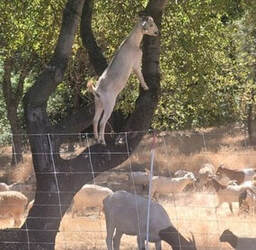 Oroville Recreation Visitors to the Thermalito North Forebay will find a full CA Parks facility with restrooms, picnic areas, a swim beach, and the Forebay Aquatic Center with kayaks, paddle boards, and other watercraft available for rent. Numerous Day Use Area (DUA) facilities with picnic tables and restrooms at Lake Oroville State Recreation Area (LOSRA) are open 8 a.m. to sunset. Bidwell, Lime Saddle, and Loafer Creek Recreation Areas are open 24 hours. The Oroville Dam Crest Road across Oroville Dam is available 5 a.m. to 11 p.m. daily and open to pedestrians and bicyclists 24-hours a day. The Lake Oroville Visitor Center anticipates re-opening later this summer. Visit the California Parks LOSRA webpage for current information on facility status and campground reservations. An interactive map of recreation facilities in DWR’s Oroville-Thermalito Complex is available on DWR’s Lake Oroville Recreation webpage. Information about the 11,000-acre Oroville Wildlife Area is available on the California Department of Fish and Wildlife webpage. And don’t forget to pick up the new Lake Oroville Trails map now available at many Oroville locations including LOSRA kiosks, Oroville Wildlife Area office on Oro Dam Boulevard West, the Oroville Area Chamber of Commerce, and Feather River Recreation and Parks District. Over 97 miles of trails maintained by State Parks and DWR are included. Photo: Swim beach at the Thermalito North Forebay Cold Water Temperatures Water temperatures in the Feather River and the Thermalito Diversion Pool, Forebay, and Afterbay continue to range between 48 and 58 degrees as very cold water from the bottom of Lake Oroville is released through Oroville Dam’s River Valve Outlet System (RVOS). Persons recreating on these waterbodies are advised to wear life jackets. Entering cold water on hot summer days can result in ‘cold water shock’, causing breathing difficulties as well as changes in heart rate and blood pressure and can be life threatening, especially without a life jacket to help you stay afloat. Find cold-water safety tips at the National Weather Service’s Safety webpage.  Blue Green Algae Monitoring DWR environmental scientists regularly monitor for blue-green algae and their toxins during the summer months. There are currently no harmful algal bloom (HAB) advisories for Lake Oroville, the Thermalito Forebay, or the Thermalito Afterbay. Water samples are taken at various locations regularly from Memorial Day through Labor Day. To learn more about HABs, or to report a HAB visit the Water Board’s website. Photo: Collecting algae samples for testing - Lake Oroville Drought Information DWR has created a “Drought” webpage where definitions, historical trends, current information, and maps of California’s water systems can be found. Links to resources, DWR activities, research, and data are available. Read about how heatwaves are impacting drought conditions on the DWR Updates webpage. The State of California recently launched a website drought.ca.gov. This website will serve as the State’s primary location for public drought news and information. DWR is encouraging water conservation efforts by all Californians. Find out ways you can help by visiting the “Save Our Water” website. Current Lake Operations The elevation of Oroville’s reservoir is about 631 feet elevation and storage is just below 803-thousand acre-feet which is 23 percent of its total capacity and 34 percent of historical average. Temperatures in the upper 90s are expected this weekend and cooling down to the high 80s and low 90s next week. Total flows to the Feather River are 1,250 cfs cubic feet per second (cfs) for meeting downstream water quality and flow requirements. Flow in the low flow channel, through the City of Oroville, is 650 cfs and flow through the Thermalito Afterbay Outlet is 600 cfs. Total releases to the Feather River are assessed daily. The public can track precipitation, snow, reservoir levels, and more at the California Data Exchange Center at www.cdec.water.ca.gov. Lake Oroville is identified as “ORO”. All data as of midnight 8/26/2021 ### Know someone who would like to receive Community Updates? They can email their request to [email protected]. 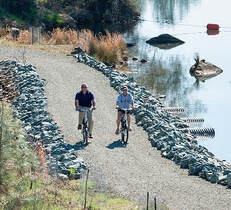 August 13, 2021 Cold Water Temperatures Current releases to the Feather River from Oroville Dam’s River Valve Outlet System (RVOS), which draws water from the deepest part of Lake Oroville, has resulted in cold water temperatures in the Feather River and the Thermalito Diversion Pool, Forebay, and Afterbay. Water temperatures are ranging between 48 and 58 degrees. Persons recreating on the Feather River and other waterbodies this summer are advised to wear life jackets. Entering cold water on hot summer days, called ‘cold water shock’, can cause breathing difficulties as well as changes in heart rate and blood pressure. Unplanned immersion, such as from a boat, kayak, or raft, or from jumping into the water from a beach, can be life-threatening, especially without a life jacket to help you stay afloat. Find cold-water safety tips at the National Weather Service’s Safety webpage. Oroville Dam Citizens Advisory Commission Public Meeting The California Natural Resources Agency is hosting its eighth Oroville Dam Citizens Advisory Commission meeting on August 27, 2021, from 10:00 a.m. to 12:00 p.m. The public meeting will be held online and will include presentations and public comment. The Commission will receive an overview of major projects and maintenance plans at the Oroville Dam facilities and will hear from a representative from the State Water Contractors. The Citizens Advisory Commission is a forum to provide public feedback from the communities surrounding Oroville Dam. For information on how to join the virtual meeting, visit https://bit.ly/OrovilleCAC. Lake Oroville Historic Water Levels Climate change-induced early warm temperatures and extremely dry soils dramatically reduced expected runoff into rivers and reservoirs this spring. Combined with the past two years being the driest two-year period since 1976-1977, water levels at Lake Oroville reached historic lows this past week, falling below the previous low water elevation of 645 feet set in September 1977. The Lake Oroville Storage Forecast Chart can be found on the State Water Project Operations and Maintenance website.  Hyatt Powerplant On August 5, DWR State Water Project operations managers took the Hyatt Powerplant at Lake Oroville offline due to falling lake levels. This is the first time Hyatt Powerplant has gone offline as a result of low lake levels. However, DWR anticipated this moment, and the state has planned for its loss in both water and grid management. DWR has been in regular communication about the status of Hyatt Powerplant with the California Independent Service Operator (CAISO) and the California Energy Commission and steps have been taken in anticipation of the loss of power generation. DWR will continue to focus on reservoir operations and water storage management at Lake Oroville to preserve as much water in storage as possible. DWR will use the River Valve Outlet System to release some water from the base of Oroville Dam to maintain river temperature requirements and outflows to the Feather River. Photo: Hyatt Powerplant at Oroville Dam 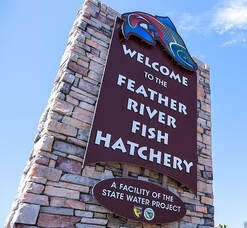 Boating at Oroville Launching of trailered boats at Lake Oroville’s temporary single-lane boat ramp at the Spillway closed August 6 due to unsafe conditions. Hand launching of small boats such as canoes or kayaks is permitted. As lake levels drop, the condition of the ramp will continue to be reassessed for future use. Both the Lime Saddle and Bidwell Canyon marinas remain open from 8 a.m. until sundown with shuttle service and boat rentals available. State Parks has issued an order for the Lake Oroville State Recreation Area (LOSRA) that boating access on Lake Oroville is not permitted starting one-half hour after sunset and ending one-half hour before sunrise due to navigational hazards. Houseboats and vessels remaining on the water must be on their mooring ball or in a slip during hours of lake closure. Additional information can be obtained by calling State Parks at (530) 538-2200. Boaters are reminded that low lake levels bring new boating hazards, including tree stumps and snags, and newly emerging outcrops. Power boats are allowed on the Thermalito South Forebay as well as the Thermalito Afterbay. A 5-miles per hour speed limit for all boats is enforced on the Afterbay north of the Highway 162 bridge and near the brood ponds on the east side of the reservoir. No motorized boating is allowed in the Thermalito North Forebay. The Monument Hill facility at Thermalito Afterbay provides boat ramp access, restrooms, a picnic area, and a swim beach. The Thermalito South Forebay facility has a two-lane boat ramp, parking, restroom, picnic tables, BBQs, shade trees, and a fish cleaning station. Photo: Gravel, single-lane boat ramp at the Spillway Boat Ramp Area 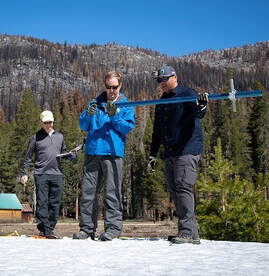 Oroville Recreation Visitors to the Thermalito North Forebay will find a full CA Parks facility with restrooms, picnic areas, a swim beach, and the Forebay Aquatic Center with kayaks, paddle boards, and other watercraft available for rent. Numerous Day Use Area (DUA) facilities with picnic tables and restrooms at Lake Oroville State Recreation Area (LOSRA) are open 8 a.m. to sunset. Bidwell, Lime Saddle, and Loafer Creek Recreation Areas are open 24 hours. The Oroville Dam Crest Road across Oroville Dam is available 5 a.m. to 11 p.m. daily and open to pedestrians and bicyclists 24-hours a day. The Lake Oroville Visitor Center anticipates re-opening later this summer. Visit the California Parks LOSRA webpage for current information on facility status and campground reservations. An interactive map of recreation facilities in DWR’s Oroville-Thermalito Complex is available on DWR’s Lake Oroville Recreation webpage. Information about the 11,000-acre Oroville Wildlife Area is available on the California Department of Fish and Wildlife webpage. And don’t forget to pick up the new Lake Oroville Trails map now available at many Oroville locations including LOSRA kiosks, Oroville Wildlife Area office on Oro Dam Boulevard West, the Oroville Area Chamber of Commerce, and Feather River Recreation and Parks District. Over 97 miles of trails maintained by State Parks and DWR are included. Photo: Mountain biking on Brad Freeman Trail near the Spillway (Spring 2021)  Blue Green Algae Monitoring DWR environmental scientists regularly monitor for blue-green algae and their toxins during the summer months. There are currently no harmful algal bloom (HAB) advisories for Lake Oroville, the Thermalito Forebay, or the Thermalito Afterbay. Water samples are taken at various locations regularly from Memorial Day through Labor Day. To learn more about HABs, or to report a HAB visit the Water Board’s website. Photo: Algal bloom on Lake Oroville's Middle Fork in June 2020 Drought Information DWR has created a “Drought” webpage where definitions, historical trends, current information, and maps of California’s water systems can be found. Links to resources, DWR activities, research, and data are available. Read about how heatwaves are impacting drought conditions on the DWR Updates webpage. The State of California recently launched a website drought.ca.gov. This website will serve as the State’s primary location for public drought news and information. DWR is encouraging water conservation efforts by all Californians. Find out ways you can help by visiting the “Save Our Water” website. Current Lake Operations The elevation of Oroville’s reservoir is about 636 feet elevation and storage is about 832-thousand acre-feet which is 24 percent of its total capacity and 34 percent of historical average. Currently, in the Northern Sierra Basin, snowpack is also below average at five percent of normal. Warm temperatures ranging from the low to mid-100s to high 90s are forecasted this weekend through next week. Total flow to the Feather River is currently at 1,750 cfs cubic feet per second (cfs) for meeting downstream water quality and flow requirements. Flow in the low flow channel, through the City of Oroville, is 650 cfs and flow through the Thermalito Afterbay Outlet is 1,150 cfs. Total releases to the Feather River are assessed daily. Flows through the City of Oroville through the low flow channel may fluctuate throughout the week for fisheries purposes. Currently, these flow patterns will hold through the weekend. The public can track precipitation, snow, reservoir levels, and more at the California Data Exchange Center at www.cdec.water.ca.gov. Lake Oroville is identified as “ORO”. All data as of midnight 8/12/2021 ### Know someone who would like to receive Community Updates? They can email their request to [email protected]. 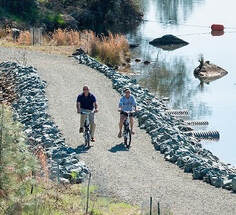 July 30, 2021 Lake Oroville Water Levels Climate change-induced early warm temperatures and extremely dry soils dramatically reduced expected runoff into rivers and reservoirs this spring. As a result, water levels at Lake Oroville are anticipated to reach historic lows this year. Water elevations as low as 620 feet above sea level are forecasted for late October - below the previous low water elevation of 645 feet set in September 1977. Decreasing lake levels are also anticipated to affect power generation at the Hyatt Powerplant if water drops below the elevation range required for safe operation. Even when hydropower is no longer generated at Hyatt, its river valve outlet system is able to provide outflows to the Feather River to supply local agriculture, fulfill in-stream requirements to benefit fish in the Feather River, and to meet Bay-Delta water quality and flow requirements. Drought Information DWR has created a “Drought” webpage where definitions, historical trends, current information, and maps of California’s water systems can be found. Links to resources, DWR activities, research, and data are available. Read about how heatwaves are impacting drought conditions on the DWR Updates webpage. The State of California recently launched a website drought.ca.gov. This website will serve as the State’s primary location for public drought news and information. DWR is encouraging water conservation efforts by all Californians. Find out ways you can help by visiting the “Save Our Water” website. Boating at Oroville All paved boat ramps on Lake Oroville are now closed due to low lake levels. The single-lane, gravel ramp at Bidwell Canyon has also closed. A gravel, single-lane boat ramp at the Spillway is open daily from 5 a.m. to 11 p.m. – gates to (and from) the Spillway Boat Ramp area close at 11 p.m. This auxiliary ramp is gravel on dirt which becomes slippery when wet, especially during times of heavy usage. To maintain the integrity of the ramp, drivers are encouraged to avoid tire spin by placing vehicles in 4-wheel drive mode and accelerating slowly when exiting the ramp, with or without a loaded trailer. Both the Lime Saddle and Bidwell Canyon marinas remain open from 8 a.m. until sundown with shuttle service and boat rentals available. Power boats are allowed on the Thermalito South Forebay as well as the Thermalito Afterbay. A 5-miles per hour speed limit for all boats is enforced on the Afterbay north of the Highway 162 bridge and near the brood ponds on the east side of the reservoir. No motorized boating is allowed in the Thermalito North Forebay. The Monument Hill facility at Thermalito Afterbay provides boat ramp access, restrooms, a picnic area, and a swim beach. The Thermalito South Forebay facility has a two-lane boat ramp, parking, restroom, picnic tables, BBQs, shade trees, and a fish cleaning station. Photo: Gravel, single-lane boat ramp at the Spillway Boat Ramp Area 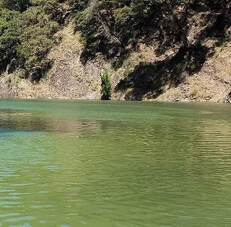 New Bald Eagles at Lake Oroville Environmental scientists with the Department of Water Resources (DWR) report they have observed four of the seven bald eagle pairs around Lake Oroville successfully raise seven eaglets this spring. The young eagles fledged - grown flight feathers – and have left their nests to find new habitat of their own. Lake Oroville and the Feather River area provide ideal habitat for bald eagles. Fish are one of the eagle’s main food sources and large water bodies like Lake Oroville provide a wide variety of fish as well as other favorite food sources such as waterfowl, small birds, and mammals. The many trees and snags (tall dead trees) near water areas provide prime nesting, roosting and hunting locations for the nesting pairs as well as other bald eagles that migrate to and through the area during the winter months. Protecting the area’s year-round bald eagle population living in the Department’s Oroville-Thermalito Complex is the responsibility of the Oroville Field Division’s environmental scientists. The bald eagle is a protected species under the Migratory Bird Treaty Act of 1918 and Bald and Golden Eagle Protection Act of 1940, as well as being listed as a ‘threatened’ species by Congress. DWR’s scientists monitor for and mitigate against threats such as public intrusions, habitat loss, or other impacts to the eagle’s nesting areas. The area has both resident bald eagles as well as eagles who migrate through each year. Photo: Bald eagle watching over nest with two fledglings 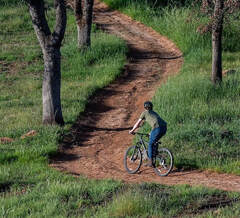 Oroville Recreation Visitors to the Thermalito North Forebay will find a full CA Parks facility with restrooms, picnic areas, a swim beach, and the Forebay Aquatic Center with kayaks, paddle boards, and other watercraft available for rent. Numerous Day Use Area (DUA) facilities with picnic tables and restrooms at Lake Oroville State Recreation Area (LOSRA) are open 8 a.m. to sunset. Bidwell, Lime Saddle, and Loafer Creek Recreation Areas are open 24 hours. The Oroville Dam Crest Road across Oroville Dam is available 5 a.m. to 11 p.m. daily and open to pedestrians and bicyclists 24-hours a day. The Lake Oroville Visitor Center anticipates re-opening later this summer. Visit the California Parks LOSRA webpage for current information on facility status and campground reservations. An interactive map of recreation facilities in DWR’s Oroville-Thermalito Complex is available on DWR’s Lake Oroville Recreation webpage. Information about the 11,000-acre Oroville Wildlife Area is available on the California Department of Fish and Wildlife webpage. Photo: Loafer Creek Recreation Area's equestrian group campground Trails Map A map of the trails maintained by DWR, CA Parks, and CDFW is now available at many Oroville locations including LOSRA kiosks, Oroville Wildlife Area office on Oro Dam Boulevard West, the Oroville Area Chamber of Commerce, and Feather River Recreation and Parks District. The map, which folds to pocket size, provides information on permitted trail uses, elevation changes, trail length, and locations of more than 97 miles of trails around Lake Oroville, along the Feather River, Thermalito Forebays and Afterbay, and the Oroville Wildlife Area. Equestrians, bicyclists, and hikers are encouraged to take advantage of this new resource.  Blue Green Algae Monitoring DWR environmental scientists regularly monitor for blue-green algae and their toxins during the summer months. There are currently no harmful algal bloom (HAB) advisories for Lake Oroville, the Thermalito Forebay, or the Thermalito Afterbay. Water samples are taken at various locations regularly from Memorial Day through Labor Day and sent to a lab for toxin analysis. If elevated levels of cyanobacteria toxins are found while testing, DWR staff will work with California’s Regional Water Quality Control Board and recreation area managers to notify the public and post advisory signs at affected waterbodies. To learn more about HABs, or to report a HAB visit the Water Board’s website. Photo: Algal bloom on Lake Oroville's Middle Fork in June 2020 Current Lake Operations The elevation of Oroville’s reservoir is about 648 feet elevation and storage is about 902,040 acre-feet which is 25 percent of its total capacity and 35 percent of historical average. Currently, in the Northern Sierra Basin, snowpack is also below average at five percent of normal. Warm temperatures ranging from the high 90s to the low 100s are forecasted this weekend through next week. Total flow to the Feather River is currently at 2,000 cubic feet per second (cfs) for meeting downstream water quality and flow requirements. Flow in the low flow channel, through the City of Oroville, is 1,250 cfs and flow through the Thermalito Afterbay Outlet is 750 cfs. Total releases to the Feather River are assessed daily. Flows through the City of Oroville through the low flow channel may fluctuate throughout the week for fisheries purposes. Currently, these flow patterns will hold through the weekend. To conserve storage, releases to the Feather River have been reduced by 1,000 cfs over past week and conditions are assessed daily for opportunities for further reductions. Lake Oroville storage is projected to fall below the historical low in the coming days. The historical low was reached on September 7, 1977, at 882 TAF (total acre feet) and 645 feet in elevation. The public can track precipitation, snow, reservoir levels, and more at the California Data Exchange Center at www.cdec.water.ca.gov. Lake Oroville is identified as “ORO”. All data as of midnight 7/29/2021 ### Know someone who would like to receive Community Updates? They can email their request to [email protected]. |
Archives
October 2023
Categories
All
|

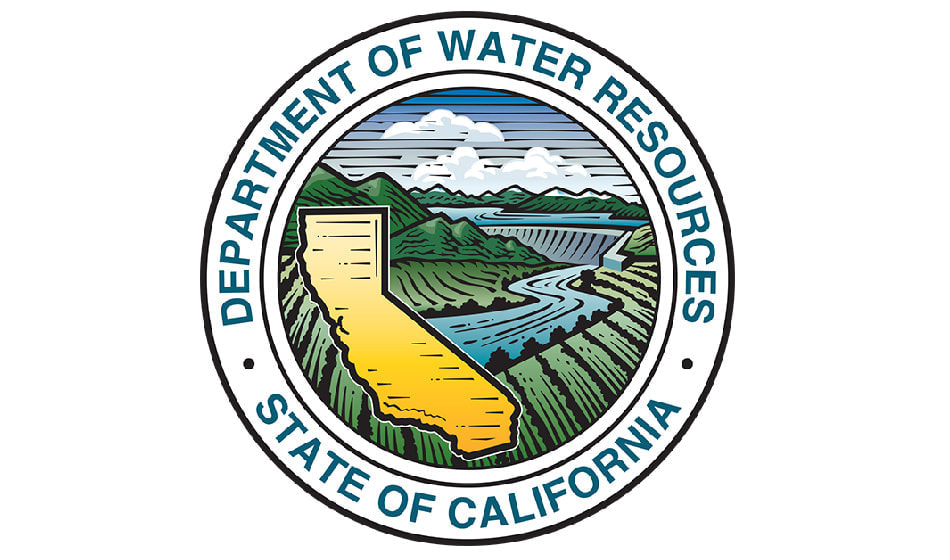
 RSS Feed
RSS Feed